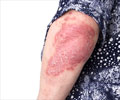Bedaquilinea FDA approved drug to treat multidrug-resistant TB can be combined with Verpamil to help improve efficacy of the drug and lower its side effects says a new study.

“Shortening treatment regimens and reducing the required doses may be a promising strategy to reduce the incidence of Bedaquiline-related adverse effects and thereby improve multidrug-resistant TB treatment outcomes,” says one of the lead authors of the study Dr.Gupta.
Promising mouse study poised for clinical trials
New research conducted at the Center for Tuberculosis Research at the Johns Hopkins University School of Medicine shows that lower doses of the toxic drug Bedaquiline — given together with Verapamil, a medication that’s used to treat various heart conditions — can lead to the same antibacterial effects as higher toxic doses of Bedaquiline. The combination of the two drugs could potentially shorten treatment time, reduce the side effects of Bedaquiline and improve patient outcomes for those suffering from TB.
The study will be published in the January 2014 issue of Antimicrobial Agents and Chemotherapy. The lead author is William Bishai, M.D., Ph.D., co-director of the Center for Tuberculosis Research.
“Using a mouse model of tuberculosis, we have shown lower doses of Bedaquiline together with Verapamil have the same antibacterial effect as the higher toxic doses,” says Shashank Gupta, Ph.D., a research fellow at Johns Hopkins. “A lower dose of Bedaquiline will cause no or less severe side effects.”
The researchers found that adding Verapamil augmented the potency of Bedaquiline and accelerated its ability to clear mycobacteria in mice. It also protected against the development of resistant mutants of the bacteria in the animals. The researchers demonstrated that supplementing Bedaquiline with Verapamil profoundly decreased the minimum inhibitory concentration of Bedaquiline against various strains of TB. The minimum inhibitory concentration is the lowest concentration of an antimicrobial that will inhibit the visible growth of a microorganism after overnight incubation in the lab. The presence of verapamil also decreased the minimum inhibitory concentration of another antimycobacterial drug, Clofazimine, against TB.
Source-Medindia














